For the first time ever, the world’s population comprises more people over age 65 than those under 5. Over the next 15 years, according to a report from Harvard University’s Joint Center for Housing Studies, households whose members are 65 and older are expected to account for a third of U.S. housing needs, with households in their 80s growing fastest of all. That shift is unprecedented in the country’s history and demands new thinking about how America houses its elderly.
The trend of recent generations toward institutionalizing seniors is untenable: there simply won’t be enough institutions or younger people to staff them. It’s also far from ideal: even before the pandemic and the climate crisis exposed widespread shortcomings in long-term care facilities, study upon study found that seniors want to live in their own homes and communities as long as they possibly can. Housing is a platform for well-being at any stage of life, and that’s especially true in the later stages: location can facilitate elders’ connections to services, amenities, and other people; affordability can free up money for other needs; familiarity and continuity can contribute to stability and mental health; and physical features can support independence and safety. Aging in place has also been found to reduce individual and social costs compared to institution-based support.
The World Health Organization (WHO) defines aging in place as the ability to live in one’s own home and community safely, independently, and comfortably, regardless of age, income, or capacity. The United Nations has declared 2021 to 2030 the Decade of Healthy Aging, with the development of age-friendly cities and communities a top priority in supporting longer, healthier lives. “Aging in place is a right,” says Jeffrey Huber, a principal with Brooks + Scarpa. “Neighborhoods as places where people can live from cradle to grave are a critical piece of social infrastructure, where architects have an immense design role to play.”
Recent examples of architecture that exemplifies senior-friendly design include the Heron, designed by Brooks + Scarpa and now under permit review in Miami Beach; 735 Davis, designed by Leddy Maytum Stacy Architects, completed in 2021 on the site of San Francisco’s razed Embarcadero Freeway; and Chicago’s Northtown Library and Senior Housing (2019), designed by Perkins&Will.
The Heron, a four-story building developed by the Housing Authority of the City of Miami Beach, addresses a crisis of affordability in the area, with 20 studio units (400 to 430 square feet) and a variety of outdoor spaces, all wrapped in a pastel-pink brise-soleil. In addition to affordability, social connectivity was a key driver of the design, especially as the units are single occupancy. Not just a pretty face, the pink brise-soleil—inspired by the bright colors and playful forms of Miami Modernism—serves as a whole-building shading device, and plays an essential role in creating comfortable spaces for residents to linger outside and connect with one another. (The distinctive facade also makes it easy for memory-impaired residents to recognize their building.) A layered approach to spatial composition makes for a seamless transition between private apartments and any one of a number of shared terraces, verandahs, raised porches, or breezeways that promote socialization. A fourth-floor common room opens onto a rooftop terrace with views of Biscayne Bay.
Units are designed to adapt as levels of physical ability vary over time. Conventional-looking kitchen cabinets are equipped with pullout doors and toe kicks, enabling a wheelchair user to roll up to the sink, and blocking is in place behind bathroom walls, ready for grab bars to be attached. An office in the building’s common area offers a base for social service providers to support residents’ changing needs. “Younger seniors moving in don’t need these accessibility features, and may not want to see them,” says Huber, “but, as residents age, these features will make it possible for them to stay there.”
The Heron also demonstrates the principle that aging-friendly communities are better able to continue to meet the needs of seniors in times of crisis, when older people are often especially vulnerable. In Florida, for example, a dozen seniors died following 2017’s Hurricane Irma, when their care home’s air-conditioning lost power. With that very much front of mind for the design team on the Heron, the LEED Platinum–targeted building is designed as a resilience hub where residents can shelter in place during a crisis. Vernacular and passive design strategies, such as the brise-soleil, provide shading and cooling without reliance on mechanical systems. The first occupiable floor sits 9 feet above sea level and 6 feet above the site’s average grade, to help withstand flooding. A series of stepped terraces, with conversation benches at each level, connect the building to the street, and a prominently located social stair also connects to the rooftop terrace. A backup generator, located on the roof and tied into the city’s natural gas supply, stands ready to power the building’s public spaces, including the top-floor community room, designed to withstand a Category 5 hurricane, as well as the elevators. And because an elevator is a critical need for mobility-challenged residents, the Heron has two.
As with the Heron, the integration of affordable senior housing into a lively mixed-demographic community is a major goal of 735 Davis Street, a 53-unit project in San Francisco’s historic northeast waterfront district and is GreenPoint Platinum certified (GreenPoint is a rating system tailored to residential construction). Located close to parks, downtown, and the waterfront, with access to services and public transit, and featuring generous views to both the Golden Gate and Bay bridges, the six-story brick-clad building is designed to knit into the fabric of the city both visually and programmatically. Together with an 88-unit family-housing development on the same block, the complex accommodates a population that ranges from infants to seniors, from the formerly homeless to middle-income earners.
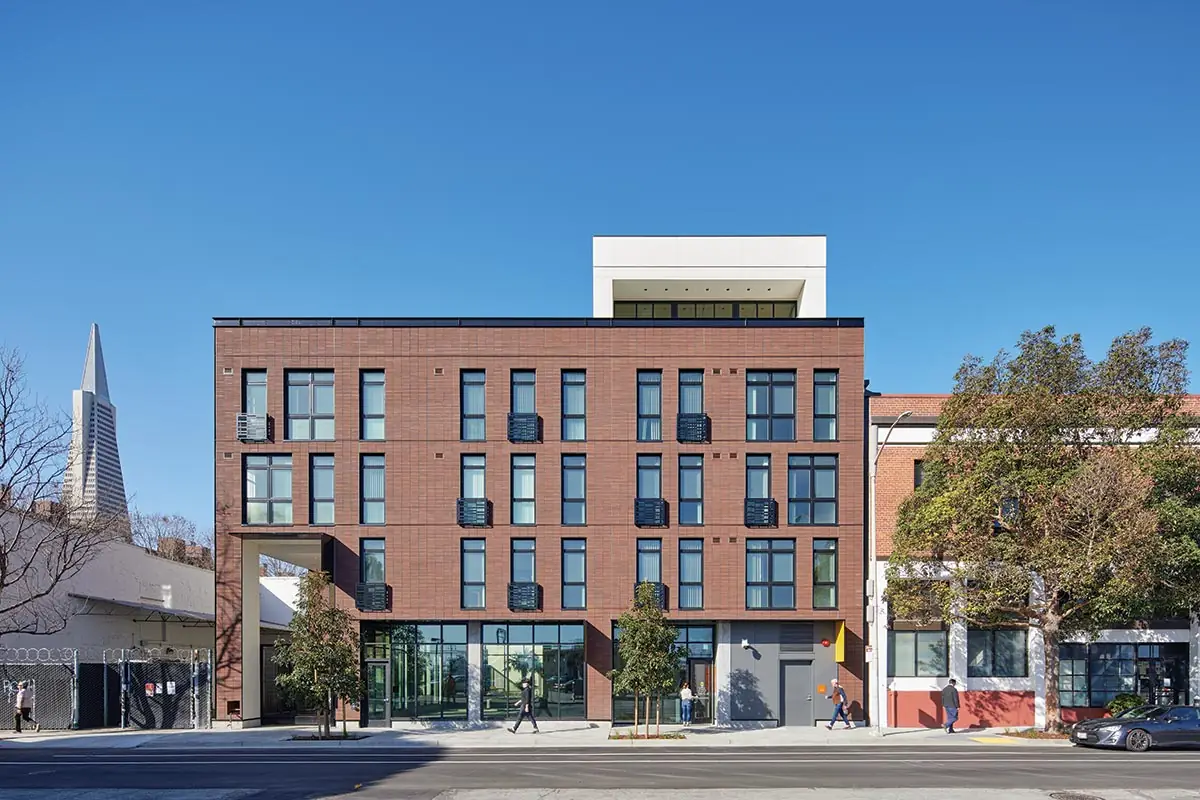
1
Generous shared spaces (2 & 3) complement the 425-square-foot units at Leddy Maytum Stacy’s 735 Davis Street (1), in San Francisco. Photos © Bruce Damonte, click to enlarge.
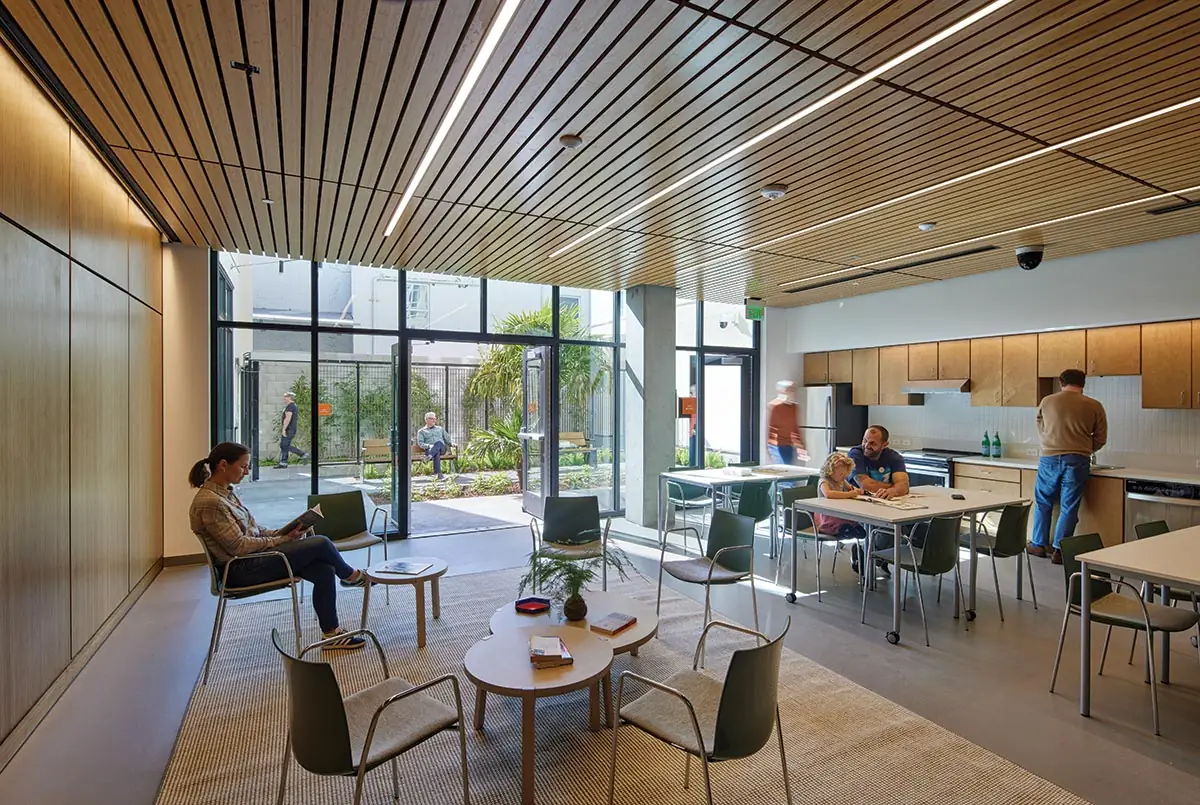
2
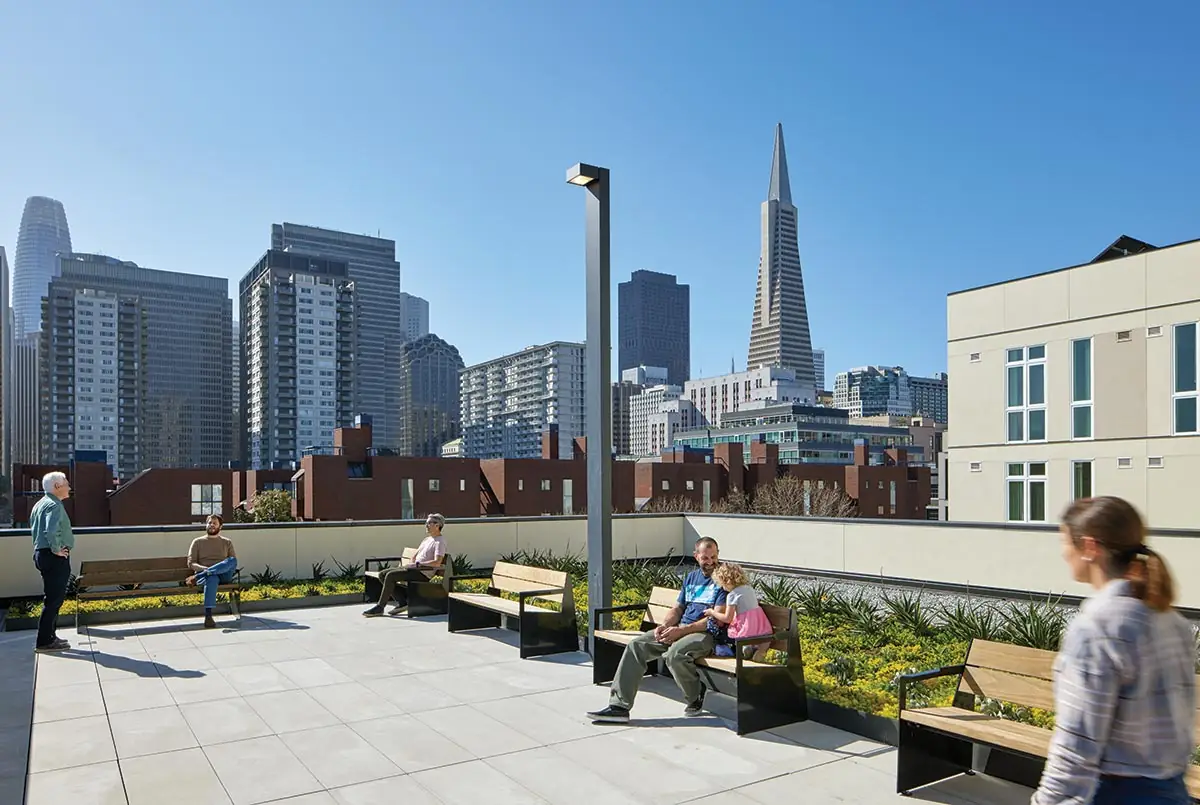
3
The building’s prominent site and ground-floor transparency contradict the prevailing trend of cloistering the assisted elderly. “The visibility of this project—that the City and the Port thought this use was valuable enough to make a prime piece of real estate available for it—is one of the wonderful things about it,” says Aaron Thornton, a principal at Leddy Maytum Stacy. “It says that the people who live here are as important as anyone else in the city.”
One of the design’s most significant achievements is a network of common areas complementing its 425-square-foot units and offering richness of choice. A ground-floor hub of activity, comprising a media room, café, and courtyard, all with views to the public domain, and an upstairs amenity room that opens to a rooftop deck with some of the best views in the city create a range of options between residents’ private units and the world beyond. “With these little interstitial areas and the variety of spaces, you can be outside and safe, you can have your own territory in the city and be in it or away from it,” says Thornton. “These are the things the project did really well and I think are its best achievement.”
An “age-friendly environment” is defined by the WHO as one that fosters healthy, active aging by building, maintaining, and expanding seniors’ capacities over the course of their lives. The design of 735 Davis contributes to making such a place with a series of small moves that add up. The first of these is universal design: going beyond code with such features as automatic door openers, roomy elevator lobbies, and an additional elevator to help ensure there’s always one working. Five-foot-wide corridors are equipped with leaning rails; 1-foot-deep doorway niches add width for two wheelchairs to pass. Generously sized kitchens and bathrooms, wheelchair-resistant finishes, and grab bars all help people of varying levels of ability to live independently. But extra space in one place must come from somewhere else: “That’s the needle you’re trying to thread,” says Thornton. “Can you make things generous enough that they work and they feel like home while making as many of them as you can?”
Other strategies on the project that add up to more than the sum of their parts pertain to wayfinding: supergraphics for ease of legibility, for example, and a different accent wall opposite elevators to distinguish each floor. To promote socialization, the project clusters social hubs—such as the community room, mail area, and laundry room—near the main entrance, generating a critical mass of activity to draw more people in. Prioritizing indoor-outdoor connections for common areas and orienting outdoor spaces for sun are other small moves that make a big impact, encouraging seniors to spend time outdoors. Ground-floor transparency provides views into and out of the project while providing protected zones from which residents can watch the world go by.
Design choices for health and well-being include the use of finishes for their authenticity and beauty, to convey warmth and dignity. Materials selected for indoor air quality prioritize residents’ health, as do filtered ventilation air and daylight and views from all inhabited areas. The design also provides space for social services, which are provided on-site to help integrate residents with special needs. “Design for aging in place is a lot of very small decisions,” says Thornton, “but if you can build those up right, you’ll have a successful project.”
Age-friendly communities meet the needs of a diversity of older people and promote their health, autonomy, inclusion, and contributions in all areas of community life. How better to integrate seniors into community life than by housing them on top of a public library?
An innovative hybrid typology, the Northtown Library and Apartments, collocates 44 units of affordable senior housing and a new branch library in a 65,000-square-foot complex located in one of the most diverse neighborhoods in Chicago. “Seniors are large users of libraries, they are a large volunteer group, and they engage with library programs,” says Derek Jones, a principal at Perkins&Will. “At the same time, they may be limited by diminishing friend groups, family, and mobility. So being right there in a civic destination is a win-win proposition.”
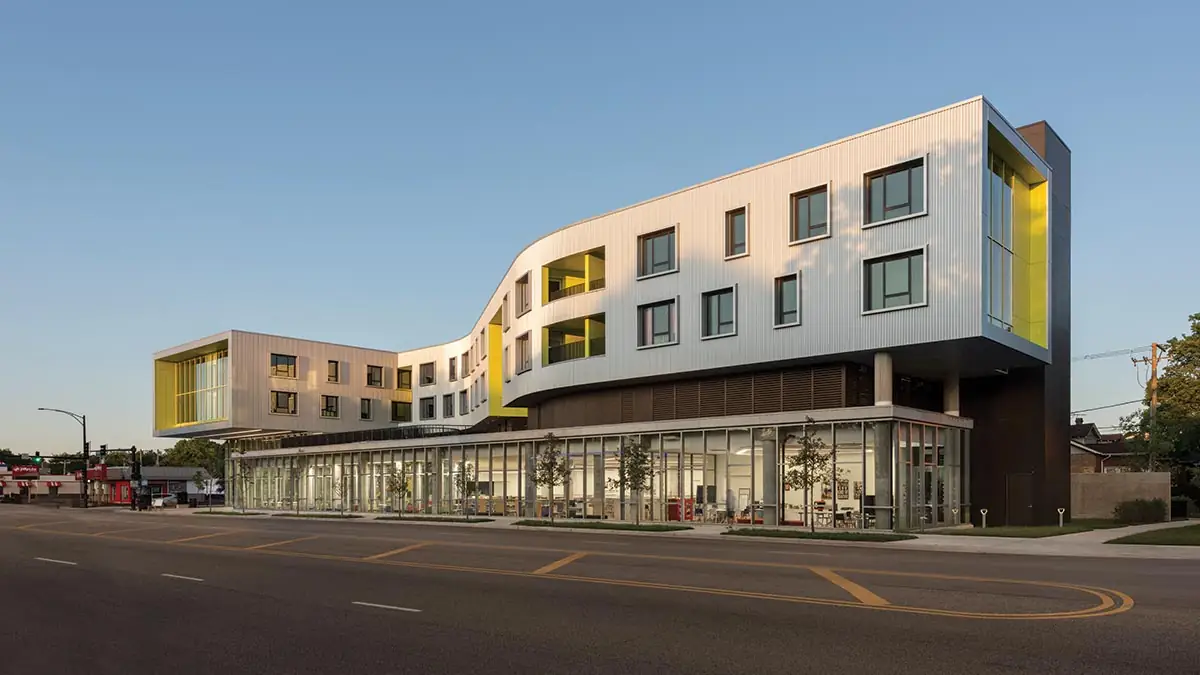
4
At Chicago’s Northtown Library and Apartments (4), designed by Perkins&Will, roof- and ground-level terraces (5) establish a visual connection between the two uses. Photos © James Steinkamp
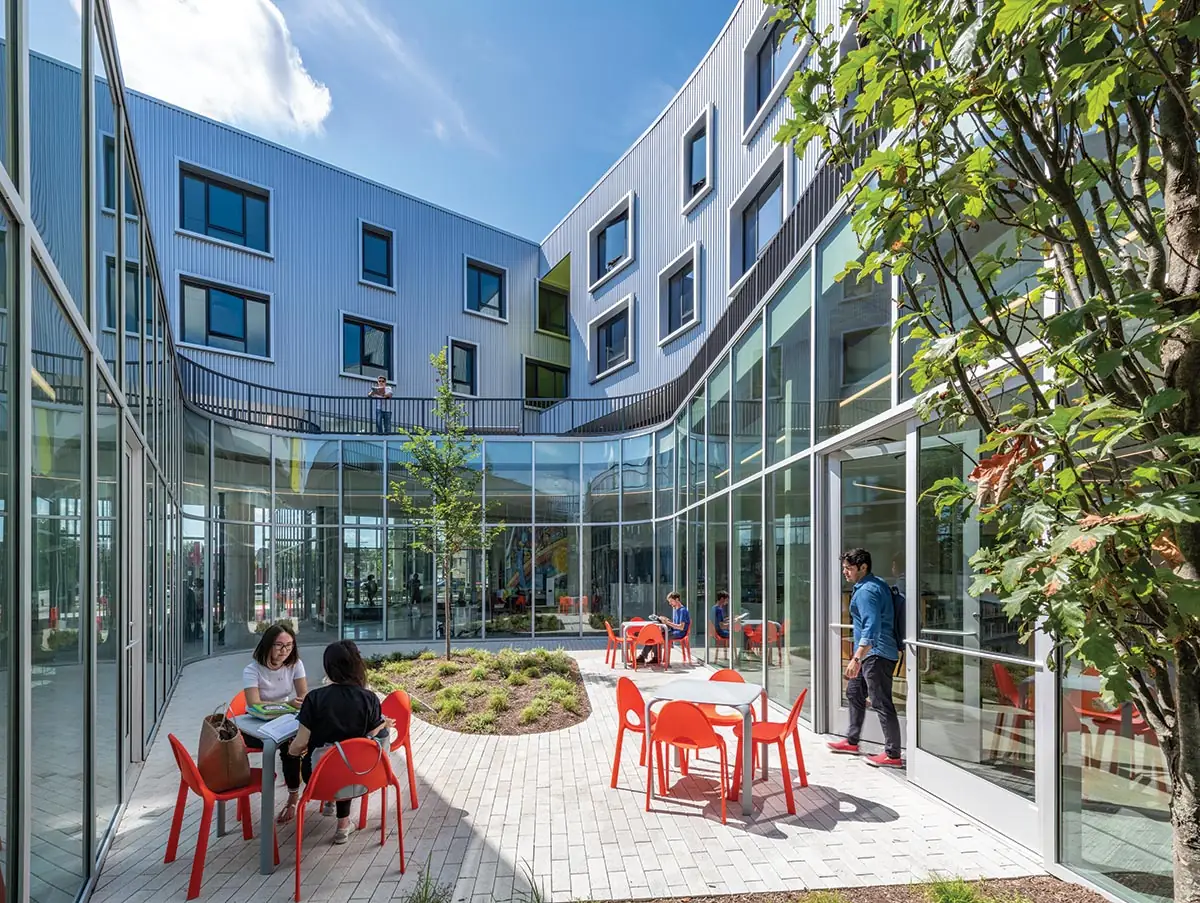
5
The project is built to the street edge, with a glassy ground floor showcasing community life in the library. Above, modular housing units wind along the library’s rooftop, generating a more interesting route than a typical residential corridor would offer, while also defining roof gardens that respond to a public park on one side and a residential neighborhood on the other. Outdoor terraces, at roof and ground levels, make visual connections between the two program elements, while a senior-appropriate exercise loop that the municipality installed in the park across the street further contributes to an age-friendly environment.
Putting senior housing and a library together generates three different types of synergy, says Jones. In addition to the programmatic win-win, the two elements’ formal relationship works well. On an urban site such as this, issues of privacy and security would make ground-floor apartments less than ideal, he says, whereas a public function on the ground floor that elevates residential units off the street “makes total sense.” Third, the two typologies bring to the table complementary types of capital. The public-housing sector is set up for acquiring and developing land in a way that libraries are not, says Jones, whereas libraries, as trusted civic amenities, can help grease the wheels of public acceptance and approval. “There is generally widespread support for affordable housing in our cities, but when that housing is slated to be right next door, there is suddenly a lot of resistance,” Jones says. “Almost nobody resists a new public library.”
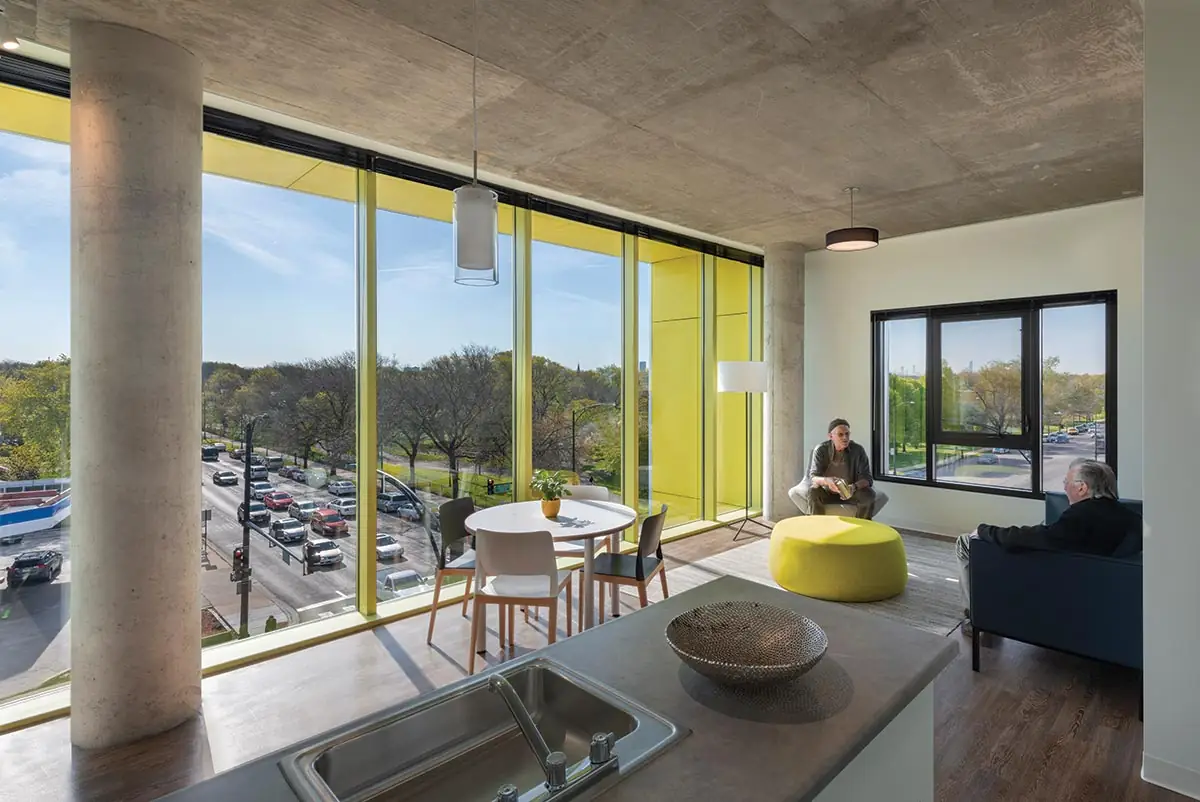
The residential units at Northtown are lifted off the street, offering privacy and security. Photo © James Steinkamp
Northtown is one of three such hybrids developed simultaneously as a collaboration between the Chicago Housing Authority (CHA) and the Chicago Public Library (CPL), including projects by SOM and John Ronan Architects. The model is proving a success: “The Northtown Library is a great intergenerational space for CHA residents to stay engaged,” says Matthew Aguilar, a CHA spokesperson. About a third of the residents use the library multiple times a week, and even more use it weekly or a couple of times a month. He also reports regular use of both the decks. “It is clear that the innovative co-library design is effective,” he says, “and that Northtown has become a community anchor.”
The model has also garnered interest from other municipalities, Jones reports. And, although he notes that a clear, top-down mandate from then-mayor Rahm Emanuel to both the CHA and the CPL was essential to those independent agencies’ ability to collaborate, “finding partners that can help bring seniors into the city center and involve them in civic life, that’s something we need to see more of,” he says.
Providing affordable, accessible housing to support aging in place for America’s burgeoning numbers of middle- and low-income seniors is now urgent. Innovative hybrids such as Northtown and thoughtful infill projects such as the Heron and 735 Davis show how architecture can help, facilitating community-oriented developments and enabling seniors to live safely, independently, and comfortably, regardless of age, income, or capacity.
Continuing Education

To earn one AIA learning unit (LU), including one hour of health, safety, and welfare (HSW) credit, read the article above and U.S. Department of Housing and Urban Development, Office of Policy Development and Research. “Aging in Place: Facilitating Choice and Independence.” Evidence Matters, Fall 2013.
Then complete the quiz. Upon passing the quiz, you will receive a certificate of completion, and your credit will be automatically reported to the AIA. Additional information regarding credit-reporting and continuing-education requirements can be found at continuingeducation.bnpmedia.com.
Learning Objectives
- Define terms relevant to senior-housing design, such as “aging in place” and “age-friendly.”
- Explain the elements of universal design.
- Discuss the importance of climate resilience for senior housing.
- Describe hybrid typologies that can accommodate complementary uses, including senior housing.
AIA/CES Course #K2307A


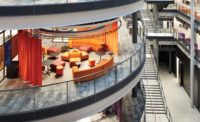
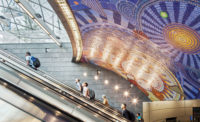
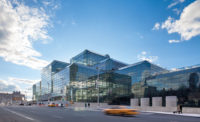
Post a comment to this article
Report Abusive Comment